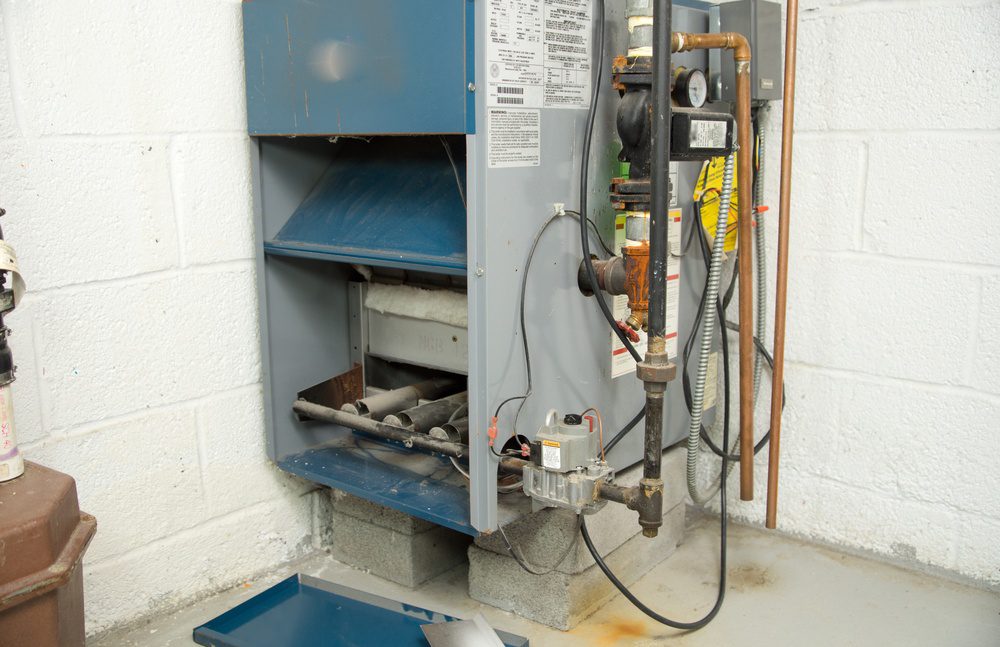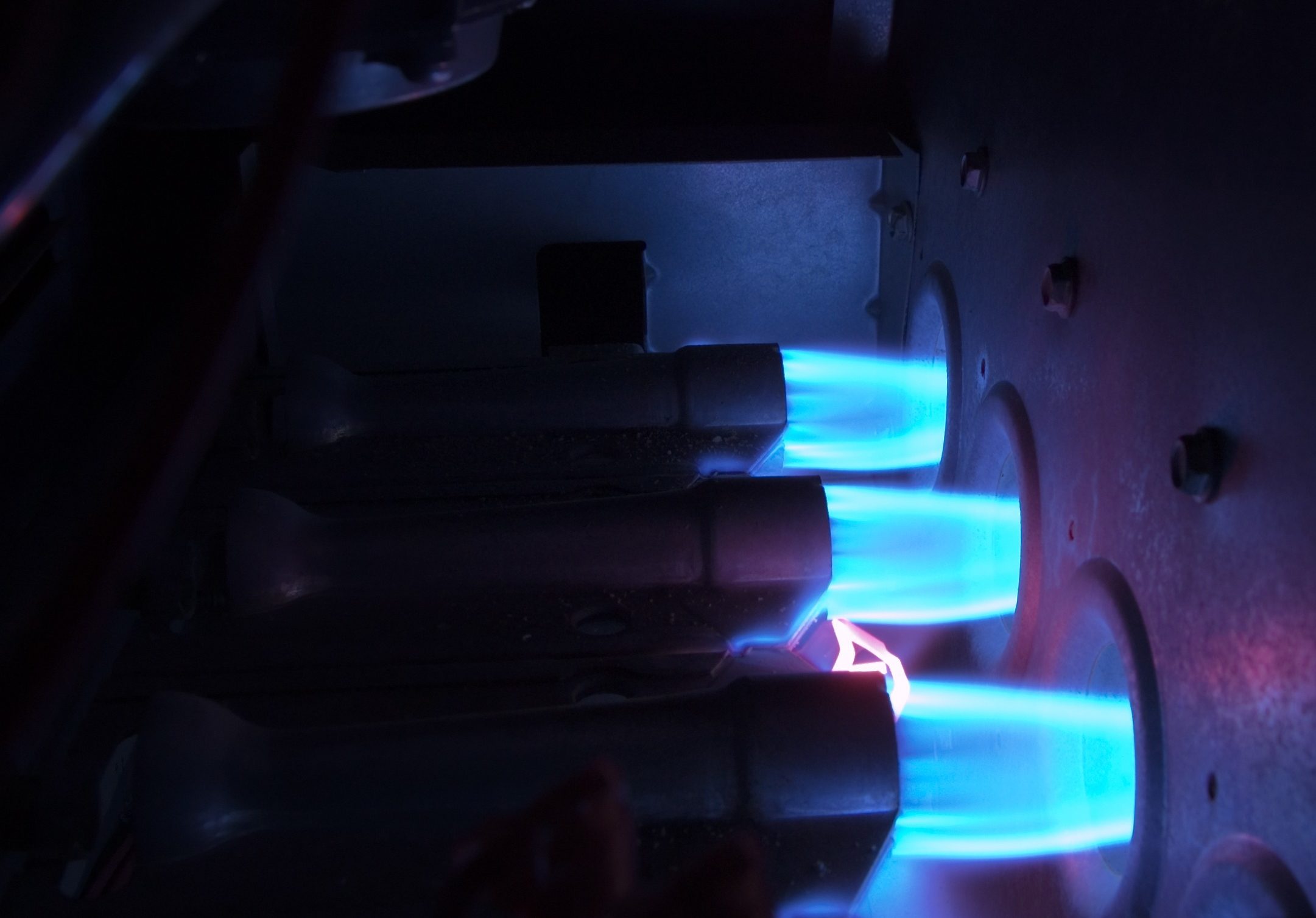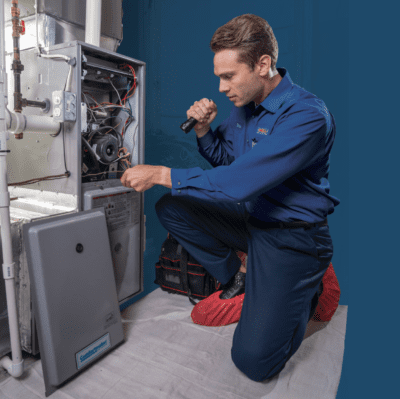
What’s a Furnace Flame Sensor?
The flame sensor within a furnace was created to ensure that the gas valve is opening only while the flames are burning. Otherwise, toxic gas could build up and result in a leak or fire. Flame sensors can be found in all modern gas furnaces and other gas-powered heating systems. However, if you have an older model, you should take a look to see whether or not a flame sensor is included in the furnace before assuming so.
6 Signs of a Malfunctioning Gas Furnace Flame Sensor
If you notice any of these issues occurring with your furnace, you should find out how to tell if your flame sensor is bad. That’s because, when it comes to yellow burner flames, rusted flue lines, high utility bills, old age, exhaust smells or constant thermostat adjustments; the root of the problem often lies at the flame sensor of the furnace.
Yellow Burner Flames
Open up or glance through the peephole of your gas furnace to see the color of the flames firing up in the burner. If they’re yellow, that means that the gas isn’t fully burning away. This is most likely because the carbon monoxide isn’t being vented out of the system effectively. Call a certified technician to mitigate the issue with a furnace flame sensor inspection or gas burner cleaning. In the meantime, monitor the reading on your home’s carbon monoxide detector.
Rusted Flue Lines
Similar to yellow burner flames, another sign of poor furnace venting is rusted flue lines. The flue system is essential to leading the dangerous CO gas outside of your home. If there’s a leak causing your flue lines to rust and corrode, the CO gas can’t exit properly. If your flame sensor is shutting down your furnace operation, contact Snell to see if you need flue maintenance services.
High Utility Bills
If your heating bills have been higher than usual—even in regular winter temperatures—then you should double-check that your air filters are clear. If they don’t need to be replaced, you could have a deeper issue with the flame sensor in your furnace that is making it difficult for your furnace to operate to its full potential. If that’s the case, have a certified contractor come over to check your flame sensor and other components in your heating system.
Tips & Insights: When Should I Replace the Furnace In My Home?
Old Age
After about 20 years of operation, you’re going to want to switch to a newer, more energy-efficient gas furnace model. This is so your aged furnace doesn’t fail on you unexpectedly. Save yourself the stress associated with a defective furnace flame sensor and contact a certified contractor to replace your heating system.

Exhaust Smells
Rusted flue lines can allow exhaust gases to escape before they reach the vent, causing unusual odors in your home. This is a strong indicator of a problem.
Constant Thermostat Adjustments
Do you feel like you have to constantly adjust the thermostat to get enough cool air running throughout your home? Don’t settle for an uncomfortable living situation—get a Snell representative on the case. Our technicians can look over your thermostat and furnace to determine where the trouble is coming from. From there, we can update you on the situation and determine the best course of action.
How to Find the Flame Sensor in a Furnace
You don’t need a professional handyman to find a flame sensor in a furnace. You’ll just need to check under the furnace access cover. This can be fastened by tabs, slots, knobs, or screws. Once it’s opened, keep your eyes peeled for a metal rod with white or discolored porcelain around its bent mounting end.
It would also have a single wire attached to it. This will be your flame sensor. The porcelain serves as insulation to prevent self-grounding on the metal furnace frame. The furnace flame sensor will be right outside of the burner assembly. It will enter into the open fire chamber or interior flame.
Tips & Insights: What Is a Gas Furnace Ignitor?
Spotting a Faulty Furnace Flame Sensor
Are you unsure how to tell if a flame sensor is bad or just needs a good cleaning? Follow these steps with your furnace to see.
- Turn off the power
- Turn off the gas valve
- Remove the mounting screw
- Carefully remove the sensor
- Check the porcelain insulation on the furnace flame sensor
- If it’s burnt or dirty: clean it
- If it’s cracked or broken: get it replaced
While it seems easy, we suggest having a certified, licensed technician from Snell Heating and Air Conditioning complete the replacement. This way, you can be sure your heater will be good to go for winter.
The Process of Cleaning a Furnace Flame Sensor
If all your furnace flame sensor needs is a good cleaning to restore functionality, we can walk you through the correct cleaning regime.
- Turn off the furnace power
- Turn off the gas valve
- Remove the furnace flame sensor
- Clean the sensor with an emery cloth
- Return the flame sensor
- Restart the furnace
How to Test a Furnace Flame Sensor
Once a licensed technician arrives at your house, they will follow a set of steps to test the flame sensor in your system
- Unplug the furnace or switch off the power at the breaker.
- Locate and unscrew the furnace flame sensor to carefully remove it.
- Touch the probes of the multimeter (volt-ohm meter) to the sensor’s wire ports.
- The device should read a low resistance.
- Press the open end of the flame sensor against a test lamp or 60-watt bulb.
- The device should read a high resistance.
- If there is no difference between the readings, a technician will replace the sensor.
Furnace Repair & Installation Services
Now that you know how to tell if the flame sensor in your furnace is bad, you will be able to contact our professionals to fix the issue. Our team provides reputable heating repair services in Reston, VA and other areas and are available to help you with your damaged furnace.
We offer dependable furnace repair and furnace tune-up solutions to help keep your house comfortable throughout the winter season. In addition, our team of licensed contractors offers other types of HVAC services such as gas boiler repair, ultraviolet air purifier system installation, and air conditioning repair. Let’s go over your heating system and determine where we can make adjustments to maximize your savings. Reach us at (703) 543-9649 to get started.
Tips & Insights: What Are The Differences Between Pedestal & Submersible Sump Pumps?




